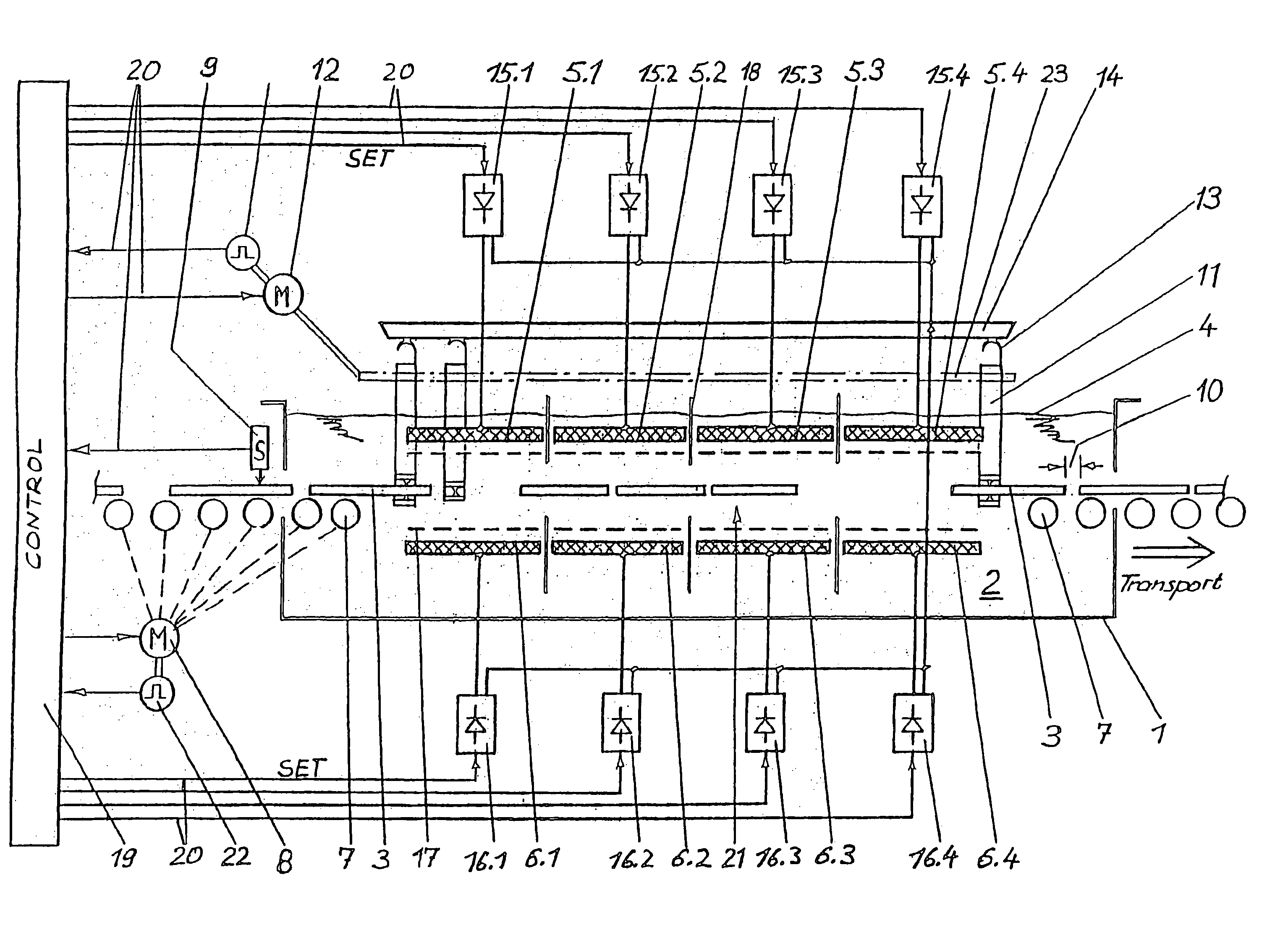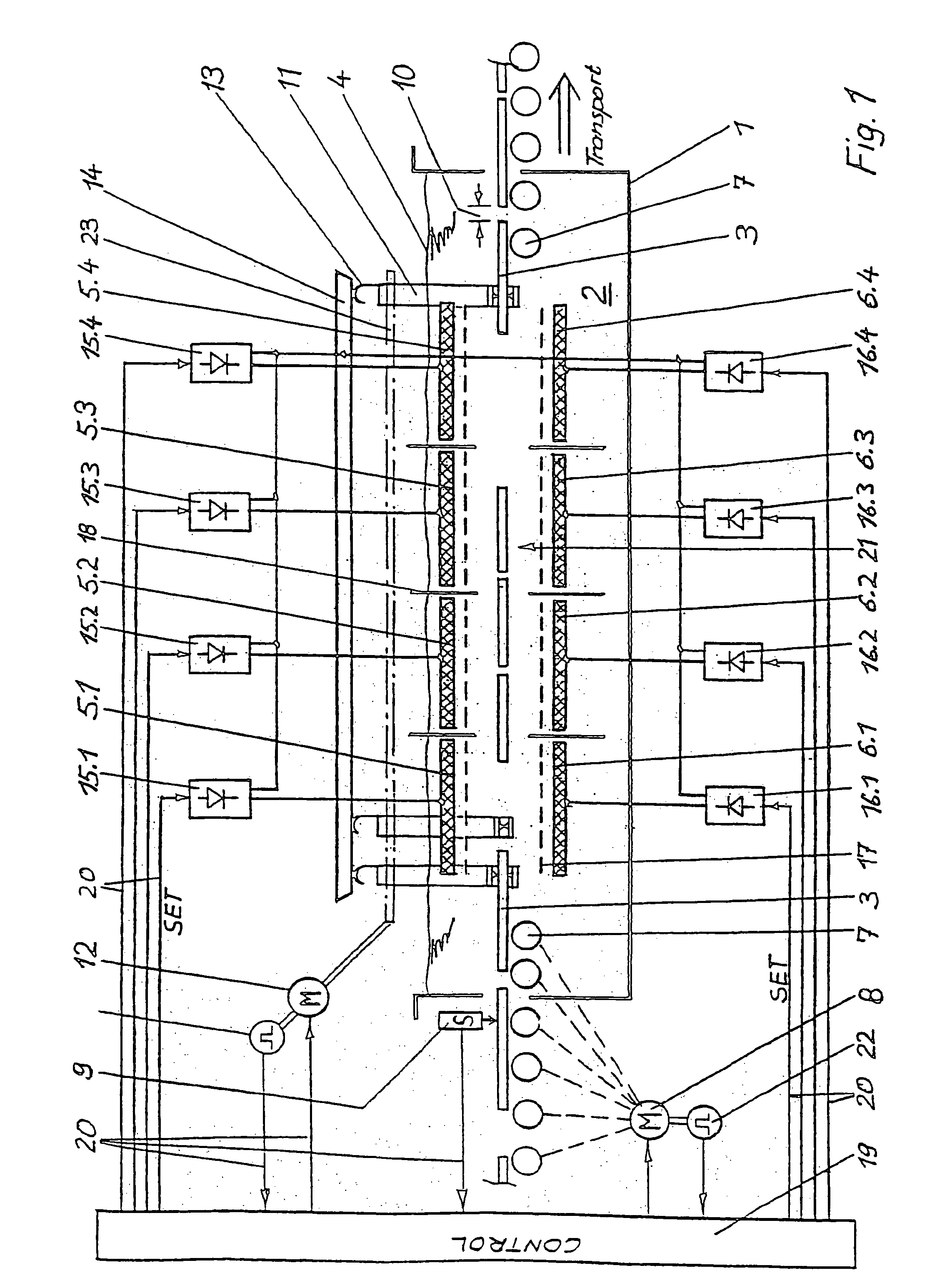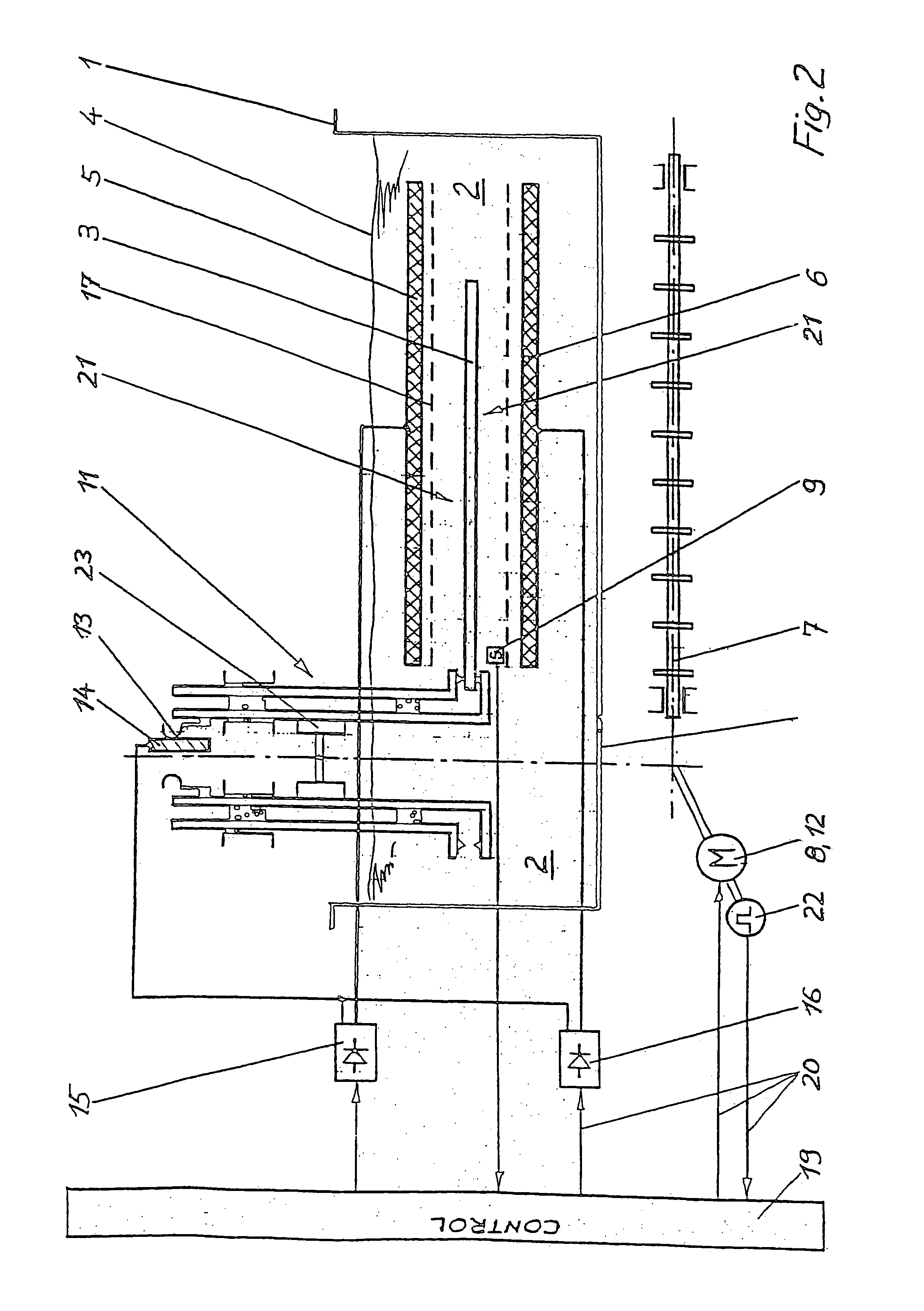Method and conveyorized system for electrolytically processing work pieces
a conveyorized system and work piece technology, applied in the direction of electrolysis components, conductive pattern reinforcement, printed circuit manufacturing, etc., can solve the problems of high cost involved in using such shields, high cost, and inability to protect the trailing edge of printed circuit boards extending transverse to the direction of transpor
- Summary
- Abstract
- Description
- Claims
- Application Information
AI Technical Summary
Benefits of technology
Problems solved by technology
Method used
Image
Examples
Embodiment Construction
[0053]The conveyorized system in FIG. 1 is provided with a plating tank 1. Said plating tank 1 is filled with an electrolyte 2. The electrolyte 2 is circulated by means of pumps (not shown) and is delivered to the board-shaped work 3. Such conveyorized systems are preferably used in the printed circuit board technique. In the following examples, the work pieces 3 are printed circuit boards or printed circuit films. However, the invention is not limited to the printed circuit board technique.
[0054]The level 4 of the electrolyte 2 extends beyond the upper anodes 5.x (5.1, 5.2, 5.3, 5.4) that are intended to be used for electrolytically processing the upper side of the printed circuit boards 3. The lower anodes 6.x (6.1, 6.2, 6.3, 6.4) serve to concurrently electrolytically process the underside of the printed circuit boards 3. The upper and lower anodes 5.x, 6.x may be soluble or insoluble anodes. The printed circuit boards 3 are introduced into the plating tank 1 through a slot-shape...
PUM
| Property | Measurement | Unit |
|---|---|---|
| Length | aaaaa | aaaaa |
| Time | aaaaa | aaaaa |
| Distance | aaaaa | aaaaa |
Abstract
Description
Claims
Application Information
 Login to View More
Login to View More - R&D
- Intellectual Property
- Life Sciences
- Materials
- Tech Scout
- Unparalleled Data Quality
- Higher Quality Content
- 60% Fewer Hallucinations
Browse by: Latest US Patents, China's latest patents, Technical Efficacy Thesaurus, Application Domain, Technology Topic, Popular Technical Reports.
© 2025 PatSnap. All rights reserved.Legal|Privacy policy|Modern Slavery Act Transparency Statement|Sitemap|About US| Contact US: help@patsnap.com



